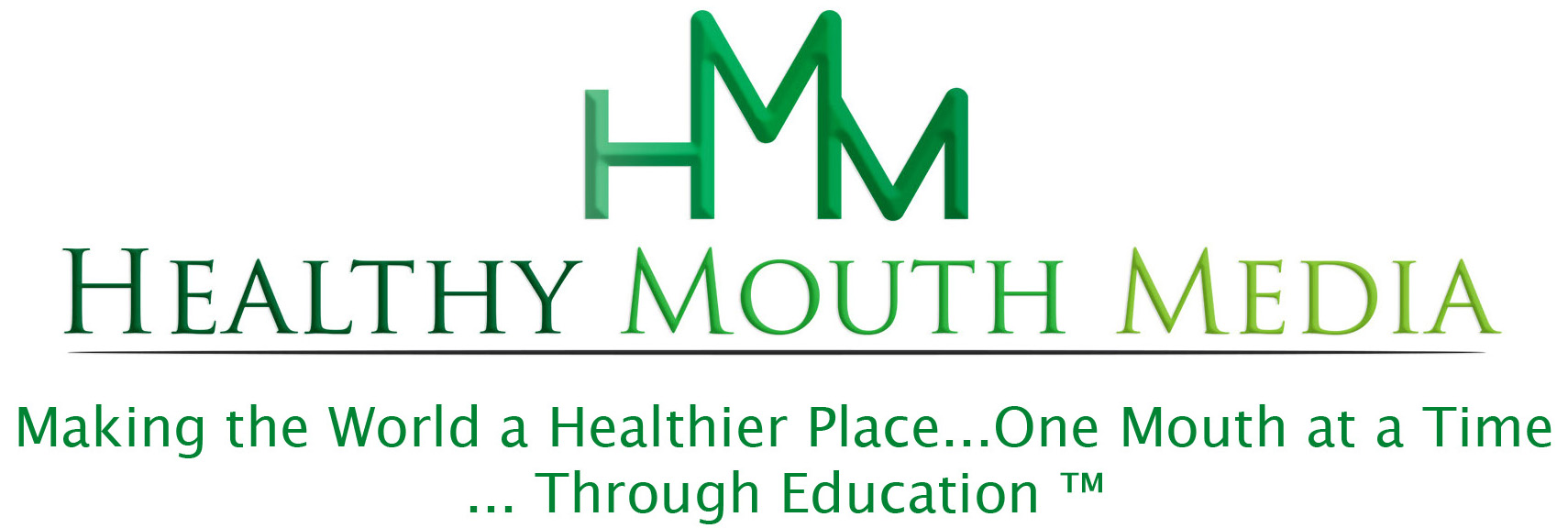Dental Insurance is NOT health insurance
‘Dental insurance is terrible!” “Why can’t it be like health insurance?” I hear that a lot and would like to clear up some misconceptions that may help you better understand why your dental coverage is NOT the same as your medical insurance.
It may help to think of dental coverage as a ‘discount plan’ for standard dental procedure prices. For example, your dentist charges $200 for a standard cleaning and your dental plan pays $100 toward the bill. That effectively gives you a 50% discount off the price you would pay if you didn’t have dental coverage.
Dental plans will almost always describe their coverage as ‘dental benefits’, not dental insurance (although some DO use the words “dental insurance” in the plan title). That’s because dental coverage ISN’T insurance; it’s a different type of plan – a benefit plan for prevention of problems. It’s not like your health care plan, which IS insurance and pays for unforeseen major illness or accident.
Let me explain the difference:
Insurance – of any sort – is designed to reimburse you for a major loss or large, unpredictable expenses. If your house is destroyed in a hurricane, your homeowner’s insurance will reimburse you for your loss. If you are injured, or in the hospital, your health insurance will cover your hospital bill because your injury is an unexpected ‘loss’ for you. The insurance company is taking the risk in both cases.
Dental coverage was intended to fund predictable and lower-cost preventive care. It was always seen as a ‘benefit plan’ which is designed to cover only certain preventive costs (which vary between plans). Some plans cover certain procedures 100%, and may pay a percentage of other procedures. Many procedures aren’t covered at all. Dental plans put the risk on the patient/consumer.
Will we ever have a ‘combined’ health and dental insurance system?
Probably not. Although it seems like both relate to ‘health care’ – and dental care is absolutely crucial for total body health – the systems behind each are completely different. It’s not just ‘apples to oranges’ it’s more like ‘fruit salad’ to ‘auto repair shop’.
Part of the problem is that dental and medical billing codes that insurance companies use as the basis for how much they will pay – are totally different! Deductibles and co-pays are totally different in how they are calculated. Pretty much all the rules are different and there is currently no way to merge the two.
There is work going on to try to bring the two systems closer together. You may even have your health insurance with a company that also offer dental coverage. But if you look closely, the dental is handled by a separate ‘division’ or even a 3rd party. An actual merging of systems is probably years away.
One process gaining traction toward such a “merger” is called “dental-medical billing” – or simply “cross-coding”. This system is attempting to teach dental practices how to code dental procedures using medical procedure codes. This way dentists can be reimbursed by the patient’s medical insurance company – independently of their dental plan – if they’re medically coded ‘just right’. This process is laborious and time-consuming, and chances are your dental office has never heard of it. Yet dentists and office managers continue to take courses in – and attend annual conferences dedicated to – cross-coding. This is the most credible attempt to bring these two ‘insurance universes’ together…but like any new idea, it’s NOT happening fast.
Why doesn’t Medicare include dental coverage?
When Medicare and Medicaid were introduced in 1965, both the ADA (American Dental Association) and the AMA (American Medical Association) through their Joint Council to Improve the Health Care of the Aged, fought against the government becoming involved in health care. The AMA didn’t keep medical coverage out of Medicare and Medicaid, but the ADA DID succeed in keeping dental coverage out of both.
Today if you are on Medicare, you have the option of signing up for a “Medicare Advantage Plan” where you pay the same premiums you pay for “classic” Medicare, but the insurance companies that offer it can also include dental and sometimes vision and hearing as well. Current Medicare Advantage Plans typically pay up to $1,800 annually for covered dental care (albeit with many of the same exclusions we’ve come to expect from our standard dental “insurance” benefit plans.) This is probably even a bit more than the pre-set maximum your dental benefits plan pays per year – usually $1,500 or less.
How did this separation happen?
Until the mid-1800’s dentistry was considered a ‘trade’ not a profession (like medicine). Dental schools were founded to be completely separate from medical schools, although they were started and run by physicians and support from the medical community. [1]
The concept of medical insurance was first introduced in 1929. By 1932 the US Secretary of the Interior published his ideas for public funding of comprehensive health care – including dentistry.
Then “organized medicine” intervened, leading to the development of what we now know as modern health insurance, based on a primarily employer-sponsored system.
Decades later, beginning in 1947, the concept of dental coverage was introduced as an incentive for workers to join labor unions. From the 1950s dental coverage was designed to limit the use of expensive services, as determined by the insurance company, and when the cost of care exceeded the limits established, the employee was expected to pay the bill.
The result? Dentistry (both the practice of dentistry and dental “insurance” benefit coverage) has been kept separate from medical care in the US.
Until dental and medical insurance companies “speak the same language”, what’s a person to do?
Prevention is the best way to control dental costs.
Dental benefits are based on prevention and preventative care. That means the patient is responsible for their own oral hygiene. They should see a dentist regularly for a cleaning and checkup. This will identify and treat any problems while they are still small, easily fixable (and relatively inexpensive).
If not treated early, neglect allows small problems to become large – and expensive – problems. Things like tooth removal, root canals and even oral cancer (the fatality rate for which hasn’t changed in the last 50 years – not unlike the annual reimbursement cap on your dental “insurance” benefit plan!).
There are a wide variety of dental plans available, so shop around. Consider what your needs are – and the needs of your family – and then look at which plans best address those needs. Do you just need basic maintenance care of cleaning and a checkup twice a year? Have a child who may need braces? Think you may need a bridge or implants?
Hint: Be sure to check with your dentist that any procedure recommended is covered, and for how much, so that you can make an informed decision.
Best advice? Shop around.
Compare how much each insurance carrier offers to pay for a given procedure. For example, one may reimburse the dentist $100 for a standard cleaning (that would normally bill at $200 with no insurance). But, will pay a larger percentage for things like deep cleaning. Another company might reimburse the dentist $175 for a standard cleaning but pay little or nothing for a deep cleaning.
Have a clear sense of what your dental needs are likely to be in the future. Read the ‘fine print’ on every policy. Then make sure your favorite dentist accepts that plan. If not, you’ll need to decide between changing coverage – or changing dentists.
But don’t miss the forest for the trees:
Beware of the illusion of ‘good dental insurance’…the more extensive dental work you need, the faster you’ll find out just how ‘good’ your dental benefits plan really is. A maximum of about $1,500 a year is a drop in the bucket if you need – as is not uncommonly the case – $5-10,000 worth of dental work – not just an annual cleaning and x-rays. [2]
It’s true: prevention is one key to good oral health – if you can do it effectively. We’re finding out that even the best preventive oral health care is a double-edged sword. Prevention doesn’t work the same way for everyone. And if you need extensive work, it’s easy to have a sense of false confidence about what’s covered and what’s not.
This may be compounded by what seems to be a rising incidence of dental disease (one example is the dental cavities epidemic, which isn’t getting the attention it deserves), and oral health problems that may occur in spite of your diligent – and valuable – preventive efforts like brushing, flossing, and regular check-ups.
As I mentioned, the current dental benefits model is based on effective prevention – and AVOIDING costly procedures. If prevention is working for you, great. If it’s not, and you find that – despite your oral-hygiene due diligence – you keep needing more root canals, crowns, implants and fillings – there may be other factors involved to discuss with to your dentist.
If you need more than routine work, you can quickly reach a point at which your dental benefits will be exhausted. They may cover only a fraction of the significant costs of extensive dental procedures. That could likely leave you no alternative than to rely on the increasing presence of health care finance companies (such as CareCredit) to get the dental work you need.
Resources:
1. https://journalofethics.ama-assn.org/article/overcoming-historical-separation-between-oral-and-general-health-care-interprofessional/2016-09
2. https://www.bennie.com/blog/why-is-dental-insurance-separate-from-medical-insurance
3. https://www.mouthhealthy.org/en/dental-care-concerns/insurance-vs-benefits


Have you looked into Medicare Advantage Plans? You can get dental coverage for little or no extra cost above what you would normally pay for just Medicare. Both Bonnie and I signed up for this and dropped our ‘stand-alone’ dental insurance. Saved a bundle and our Advantage Plan has $2,100/yr limit. WAY more than the typical $1000-1200 you get with stand alone dental insurance. Your dentist may not be aware of the current coverages available.
This is an excellent article! Thank you from a public health dental hygienist!
My husband and I have been using the same dentist for years. Now that we’re on Medicare and no longer have dental benefits from our employers, we chose, on our dentist’s advice, to not purchase dental coverage at all because it would cost more than paying out of pocket for what we’ve been needing for the last few years.